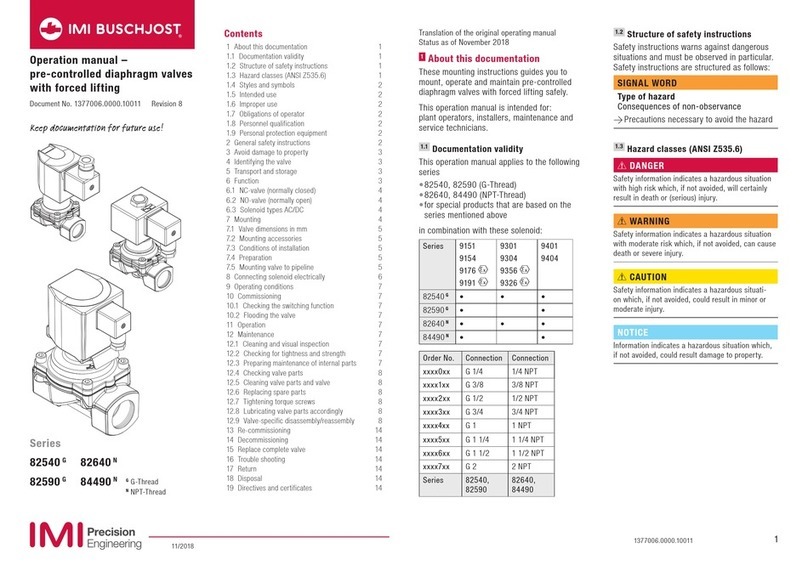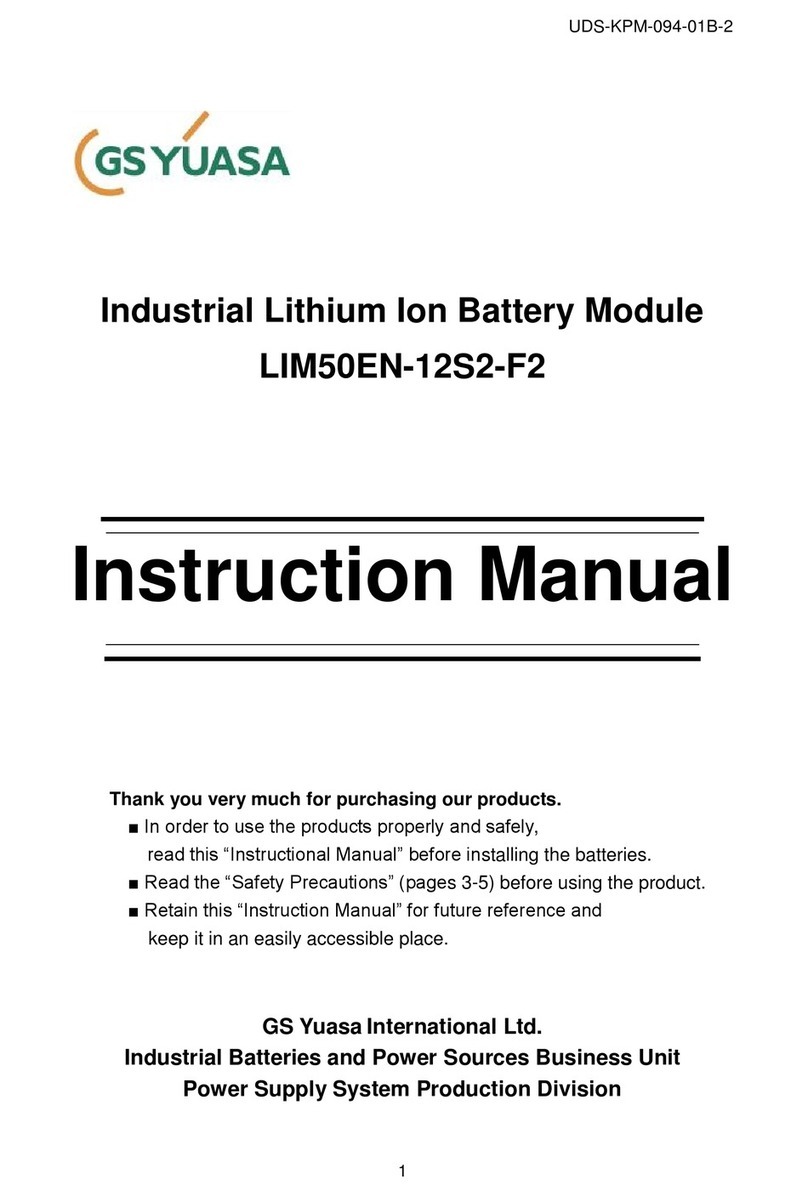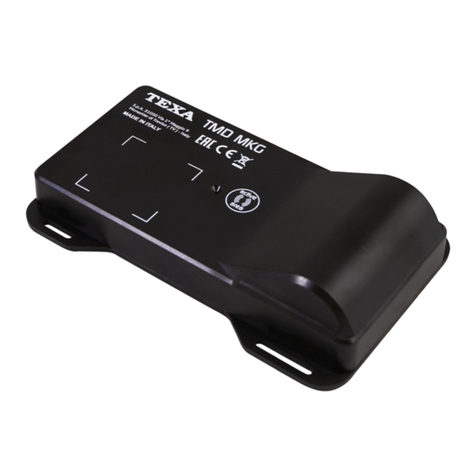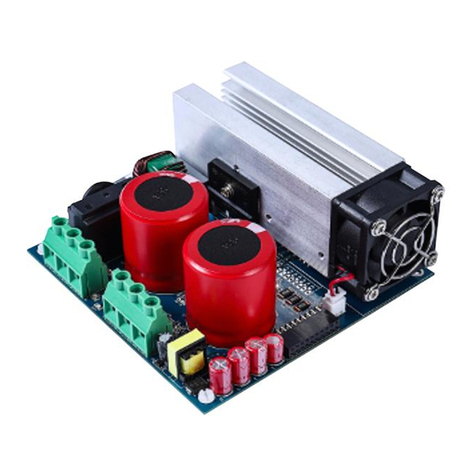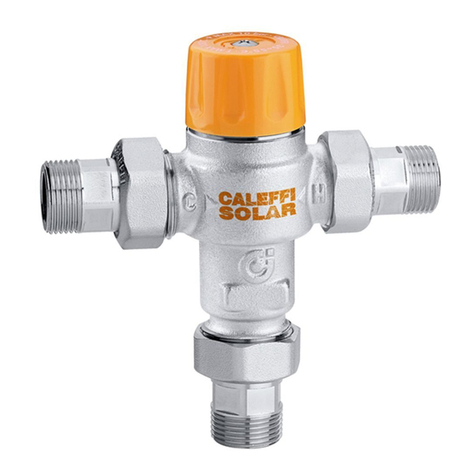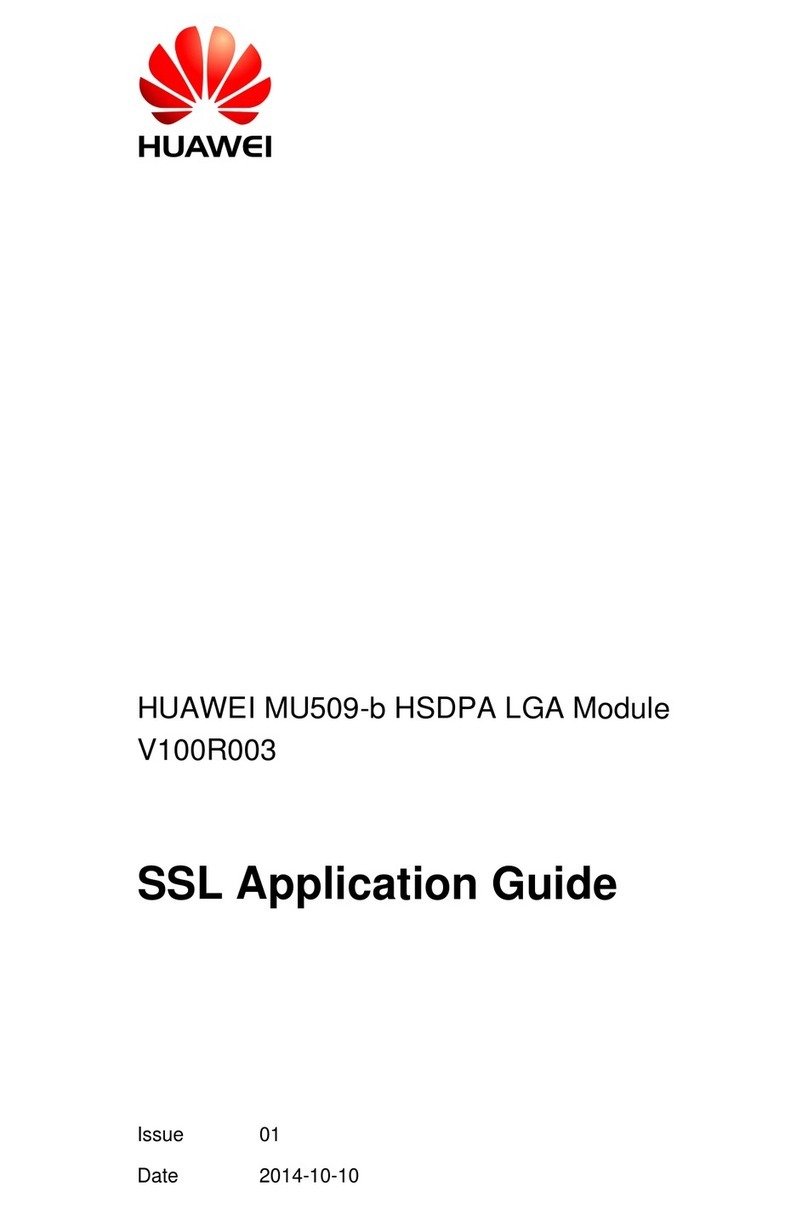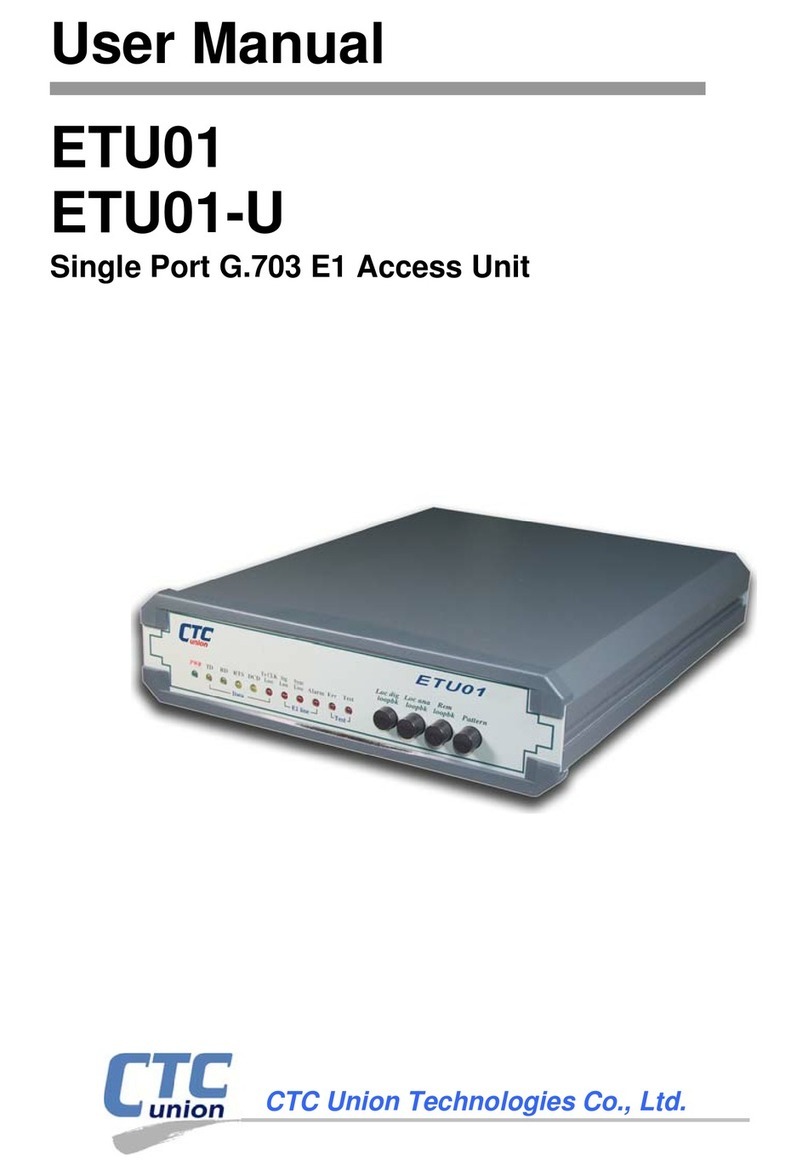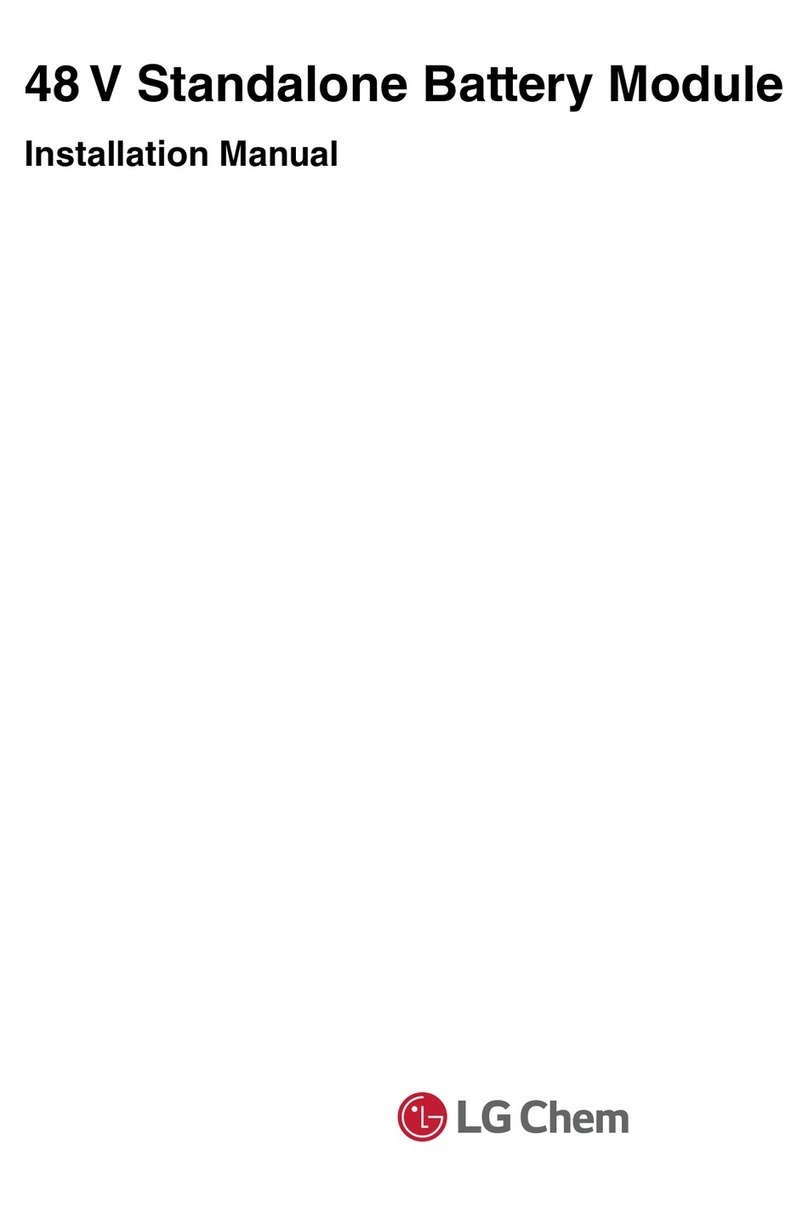IMI BUSCHJOST 82400G Series User manual

1
11/2018 1377005.0000.10011
Operation manual –
pre-controlled diaphragm valves
Document No. 1377005.0000.10011 Revision 8
Keep documentation for future use!
Contents
1 About this documentation 1
1.1 Documentation validity 1
1.2 Structure of safety instructions 1
1.3 Hazard classes (ANSI Z535.6) 1
1.4 Styles and symbols 2
1.5 Intended use 2
1.6 Improper use 2
1.7 Obligations of operator 2
1.8 Personnel qualification 2
1.9 Personal protection equipment 2
2 General safety instructions 2
3 Avoid damage to property 3
4 Identifying the valve 3
5 Transport and storage 3
6 Function 4
6.1 NC-valve (normally closed) 4
6.2 NO-valve (normally open) 4
6.3 Solenoid types AC/DC 4
7 Mounting 4
7.1 Dimensions 5
7.2 Mounting accessories 5
7.3 Conditions of installation 5
7.4 Preparation 5
7.5 Mounting valve to pipeline 5
8 Connect solenoid electrically 6
9 Operating conditions 7
10 Commissioning 7
10.1 Checking the switching function 7
10.2 Flooding the valve 7
11 Operation 8
12 Maintenance 8
12.1 Cleaning and visual inspection 8
12.2 Checking for tightness and strength 8
12.3 Preparing maintenance of internal parts 8
12.4 Component overview 8
12.5 Unmounting solenoid 9
12.6 Disassemble the valve parts 9
12.7 Checking valve parts 9
12.8 Cleaning valve parts and valve 9
12.9 Replacing spare parts 10
12.10 Tightening torque screws 10
12.11 Mounting valve parts 10
12.12 Mounting solenoid 10
13 Re-commissioning 10
14 Decommissioning 10
15 Replace complete valve 10
16 Trouble shooting 11
17 Return 11
18 Disposal 11
19 Directives and certificates 11
A1
82410 N
82740 N
GG-Thread
NNPT-Thread
FFlange
Series
82400 G
82730 G
83030 F
Translation of the original operating manual
Status as of November 2018
1 About this documentation
These mounting instructions guides you to
mount, operate and maintain pre-controlled
diaphragm valves safely.
This operation manual is intended for:
plant operators, installers, maintenance and
service technicians.
1.1 Documentation validity
This operation manual applis to pre-controlled
diaphragm valves of the following series
•82400, 82730 (G-Thread)
•82410, 82740 (NPT-Thread)
•83030 (Flange)
•for special products that are based on the
series mentioned above
in combination with these c-solenoids:
Series 9101 9151 9136 x6106 x
82400 G • • • •
82410 N • • • •
82730 G • • • •
82740 N • • • •
83030 F • • • •
Order No. Connection Connection Nominal
size
xxxx0xx G 1/4 1/4 NPT -
xxxx1xx G 3/8 3/8 NPT -
xxxx2xx G 1/2 1/2 NPT DN 15
xxxx3xx G 3/4 3/4 NPT DN 20
xxxx4xx G 1 1 NPT DN 25
xxxx5xx G 1 1/4 1 1/4 NPT DN 32
xxxx6xx G 1 1/2 1 1/2 NPT DN 40
xxxx7xx G 2 2 NPT DN 50
Series 82400
82730
82410
82740
83030
1.2 Structure of safety instructions
Safety instructions warns against dangerous
situations and must be observed in particular.
Safety instructions are structured as follows:
SIGNAL WORD
Type of hazard
Consequences of non-observance
→Precautions necessary to avoid the hazard
1.3 Hazard classes (ANSI Z535.6)
!DANGER
Safety information indicates a hazardous situation
with high risk which, if not avoided, will certainly
result in death or (serious) injury.
!WARNING
Safety information indicates a hazardous situation
with moderate risk which, if not avoided, can cause
death or severe injury.
!CAUTION
Safety information indicates a hazardous situati-
on which, if not avoided, could result in minor or
moderate injury.
NOTICE
Information indicates a hazardous situation which, if
not avoided, could result damage to property.

2
11/2018 1377005.0000.10011
1.4 Styles and symbols
This documentation uses the following styles
and symbols:
• list
→instruction
1.
2.
preset order of instructions
701 part number (according to part list)
1 flexible part number (section)
qreplace spare part
!+ DANGER /WARNING /CAUTION;
NOTICE: embedded safety message
given limits or fixed value
1.5 Intended use
The valve is solely intended to control or stop
a fluid flow within approved operating limits.
The fluid must only flow through the valve in
the determined flow direction.
You may only operate the valve with fluids that
will not cause any chemical reaction with the
valve’s materials or lead to abrasive effects.
Under the following conditions, a valve with
nominal diameter > DN 25 is not approved as
the only shut-off valve at the end of a pressure
line:
•The contents of the pressure system must
not be released into the atmosphere.
•The contents of the pressure system must
not be transferred to a downstream system
with lower nominal pressure rating (PN).
1.6 Improper use
In the following cases it is prohibited to opera-
te the valve:
•The valve is not used for the designated
purpose.
•The permitted temperature and pressure
ranges are exceeded.
•Damages to the valve – e.g. cracks,
deformation – were detected but the valve
remains in operation.
•Malfunctions were detected but the valve
remains in operation.
•The valve has been modified without authori-
sation of the manufacturer.
•The safety instructions of this documentation
are not observed.
For damages caused by improper use, the
liability of the manufacturer is excluded.
Our guarantee expires in the following cases:
•Undue intervention and altering are done to
the valve.
•This documentation or the operating limits
as shown in the particular data sheet are not
observed.
1.7 Obligations of operator
Product
→Over the entire life cycle of the valve all
applicable regulations must be observed.
The instructions of this operation manual
must be observed and followed.
→Initiate a risk assessment of the overall
installation, to detect potential dangers that
may occur in combination of the valve with
other components.
Persons
→Initiate the instruction of each person who
is working with the valve.
Applicable regulations about occupatio-
nal safety ad safety engineering must be
known and applied.
Documentation
→This documentation must be fully read and
understood.
→The instructions given in this operation
manual must be put into practice.
→This documentation must be available at
any time.
Markings at the operating site
→Ensure adequate warning of the risks linked
to the valve. Use in the area of the installed
valve the following warning and prohibition
sings in compliance with EN ISO 7010 and
and BGV A8 (VBG125):
Warning sign to indicate risk of
burns at the solenoid
Warning sign to indicate elec-
trical hazards at the solenoid
Prohibition sign to
prevent people from entering
hazardous areas
1.8 Personnel qualification
→Ensure as operator that persons who work
on or with the valve are sufficent qualified
for this job.
→Comprehensively train the operating per-
sonnel in terms of safety.
→Only allow trained specialists to perform
electric connections, commissioning, main-
tenance and trouble shooting.
Demands
Operating personnel must be instructed on
operational sequences and procedures.
Operating personnel must know its responsi-
bilities regarding the work to be performed.
Trained specialists must possess profound
knowledge in mechanical engineering, electri-
cal engineering, hydraulic und pneumatic.
Trained specialists must be authorized to
commission, ground and designate devices,
systems and power circuits according to the
standards of safety technology.
Trained specialists must possess profound
knowledge about design and principle of ope-
ration of the valves and the plant.
1.9 Personal protection equipment
→Wear appropriate protection equipment.
Observe the personal protection equip-
ment as requested in “residual risks” (see
chapter 2 ).
Protective eye glasses
to protect from escaping fluids or
exhausting compressed air
Protective gloves
Resistance to cutting to protect
from sharp edges or ridges;
Resistance to acids to protect from
hazardous fluids
Protective footwear
to protect from parts or tools falling
down
2 General safety instructions
These safety instructions are only related to
the single valve. In combination with other
plant components there may be other potential
dangers, which must be taken into account by
carrying out a risk analysis for the system.
→Compare the details on rating plate and
datasheet to the operating data. The limits
for the particular application (e.g. pressure,
temperature) must not be exceeded.
→Only perform assembly and maintenance
works when the pipe system is in depres-
surized state.
→Flood the valve slowly during commissio-
ning. Fast pressurizing will cause the valve
to open briefly.
→Strength tests with the valve seat open are
permitted maximum up to 1.5 times of the
nominal pressure rating (PN) at room tem-
perature. The valve must not be operated
during these tests.
A1

3
11/2018 1377005.0000.10011
! DANGER
Hazardous electrical voltage
(>25V AC; >60V DC)
There are risks from electrical
voltage during assembly and
maintenance.
→The electrical connection of the solenoid
must be carried out only by a qualified
electrician.
→You may only plug or remove the device
socket in de-energized state.
→Disconnect the power supply off the sole-
noid prior to assembly or disassembly.
!WARNING
Danger from pressurized
pipelines
Pressurized pipelines may burst
resulting in injuries.
→Depressurize pipe system and block the
fluid flow prior to opening or unmounting
the valve.
!CAUTION
Risk of burns at the solenoid
Solenoid is heating up during
operation. Touching the solenoid
leads to risk of burns.
→Leave the solenoid to cool down before
working at the valve.
Residual risks
kg
Weight of the valve
Phases: transport, storage,
assembly, maintenance, disposal
Risk: falling off, tipping over
Personal protection equipment
(PPE): Protective footwear
Hazardous fluids
Phases: assembly, operation,
maintenance, disposal
Risk: skin contact, eye contact,
breathing vapors
PPE: protective gloves, protective eye
glasses, breathing protection
Potentially explosive atmosphere
Risk: danger of explosion
!WARNING: Use solenoid an device
socket with Ex-protection.
Sharp-edges and threads
Phases: transport, assembly,
maintenance, disposal
Risk: risk of cuts
PPE: protective gloves
3 Avoid damage to property
NOTICE
Deposits and dirt lead to malfunctions
If the control bores are clogged or the
core is blocked by soil the valve no longer
closes or opens.
→Install a strainer (mesh size ≤0.25mm) in
front of the valve inlet P if necessary.
Damages through accumulation of heat
The solenoid will overheat during conti-
nuous duty if the heat can not be radia-
ted. This shortens the service life of the
solenoid.
→You must not cover the solenoid with paint.
→You must not encase the solenoid in
atight housing or in a thermal insulation.
Residual risks
Pressure against valve outlet
The valve only firmly closes in flow
direction.
Fluid freezing
The valve is not designed to with-
stand the fluid freezing.
4 Identifying the valve
The rating plate is situated on the solenoid
body.
use -plug only
15VA/7W
0–25
XXXX
23050
8240000.9101.23050
Part no./Bestell-Nr.
VHz
PA bar
D-32545 Bad Oeynhausen
www.imi-precision.com
Buschjost GmbH
Made in Germany
6
2
3
7 *
1
5
4
100%
8
Rating plate (example)
1 Order number
2 Operating voltage
3 Frequency of voltage
4 Power consumption inrush/holding
5 Operating pressure range
6 Date of manufacture (week/year)
7 * if this marking is shown on the rating plate:
use device socket with rectifier
8 Duty cycle
An additional marking is applied to the spring
clip of the c-solenoid.
G 1/4
0,1 - 16 bar DC only
8240000.9100
xxxx
xxxx 4
23
22
1
6
5
Marking of the spring clip (example)
1 Order number (without voltage/frequency)
2 Operating pressure range
3 Size of connection
4 DC only (only with DC coils)
5 Date of manufacture (week/year)
6 Serial number
5 Transport and storage
NOTICE
Damage of the valve
Valve may be damaged if foreign particles
get into the valve.
→Transport and store the valve dry and only
in the delivery packaging.
→Take valve out of the packaging immedia-
tely prior to assembly.
→Leave the blanking plugs or protective
collars into valve connections.
Prolonged storage at −10 °C to +20 °C
Avoid during transport:
mechanical loads: falling off, tipping over
Damages to the electrical terminal elements
Avoid during storage:
thermal stress: permanently increased storage
temperatures; distance to heat sources < 1m
chemical load: through solvents, chemicals,
acids, fuels and similar at the storing site
weather conditions: at construction sites strong,
watertight containers are necessary
Unfavourable storing conditions may reduce
the service life of the sealing materials.
A1

4
11/2018 1377005.0000.10011
6 Function
Design
2/2-Way seat valve with diaphragm as sealing
device.
Operation
The valve is electromagnetic indirectly-control-
led. The switching function needs a pressure
difference between valve inlet Pand valve
outlet A.
6.1 NC-valve (normally closed)
A
P
PA
6
7
1
4
3
2
5
Sectional view (NC-valve; closed)
1 Main valve seat
2 Control bore in the diaphragm (pressure build-up)
3 Chamber
4 Compression spring above the diaphragm
5 Pilot seat
6 Compression spring inside the core
7 Magnet face of the core tube
Normal position: closed
Due to the effect of the compression spring 6
inside the core the pilot seat 5 is closed.
Compression spring 4 presses the diaphragm
sealingly to the main valve seat 1.
The operating fluid flows through the control
bore 2 in the diaphragm to the chamber 3
above the diaphragm and increases the closing
force.
Switching position: open
The magnetic force lifts the core towards
the magnet face of core tube 7 when the
solenoid is energized. Since the pilot seat 5
is open the fluid pressure is reducing from
chamber 3 towards valve outlet. More fluid is
flowing off via the pilot seat 5 to the cham-
ber 3 than the amount flowing in via the con-
trol bore 2 in the diaphragm. The differential
pressure lifts up the diaphragm and opens the
main valve seat 1.
6.2 NO-valve (normally open)
A
P
PA
7
8
1
4
3
2
6
5
9
Sectional view (NO-valve; open)
1 Main valve seat
2 Control bore in the diaphragm (pressure build-up)
3 Chamber
4 Compression spring above the diaphragm
5 Control bore in the valve (pressure reduction)
6 Pilot seat
7 Pole piece
8 Compression spring inside pole piece
9 Core
Normal position: open
When the solenoid is de-energized, the
pilot seat 6 is opened by the effect of the
compression spring 8 and the control bore 5
inside the valve is opened. The pressure diffe-
rence inside chamber 3 keeps the diaphragm
open against the power of the compression
spring 4. The main valve seat 1 is open.
Switching position: closed
When the magnet is energized, the core 9 is
pulled against the pole piece 7. The core 9
presses the seal plug sealingly against the
force of compression spring 8 on the pilot
seat 6. The outflow of the fluid flow from
the chamber 3 is interrupted. Compression
spring 4 presses the diaphragm sealingly
to the main valve seat 1. The operating
fluid flows through the control bore 2 in the
diaphragm to the chamber 3 above the dia-
phragm and increases the closing force.
6.3 Solenoid types AC/DC
The valve may be equipped without changing
of the mechanical part with an DC voltage
solenoid or AC voltage solenoid. In both cases
the permissible voltage tolerance amounts to
±10%. Special versions may cause deviations.
7 Mounting
NOTICE
Damage of the valve
The valve may be damaged through in-
appropriate installation.
→Only trained and authorized specialists
may install the valve.
→Only use appropriate tools and suitable
sealing materials.
→Make sure that the valve is mounted in
flow direction.
→Make sure not to distort the valve body,
particularly in case of a misaligned pipe-
work.
There must be no mechanical loads
applied to the solenoid.
→Do not use solenoid as a lever during
mounting.
Valve only firmly closes in flow direction.
Inflow against the valve’s flow direction
may lead to the destruction of compo-
nents.
→Implement adequat measures if back flow
is to expect; for example by adding check
valves to the pipe system.
The valve may get damaged by external
loads at the operating site.
→Protect valve from objects falling down.
→Secure the valve against direct weather
influences and the possible effects.
A1

5
11/2018 1377005.0000.10011
7.1 Dimensions
Lø A
H
Series 82400, 82410, 82730, 82740
Port size L H [1] ø A
G 1/4 1/4 NPT 60 79 44
G 3/8 3/8 NPT 60 79 44
G 1/2 1/2 NPT 67 81 44
G 3/4 3/4 NPT 80 88 50
G 1 1 NPT 95 98 62
G 1 1/4 1 1/4 NPT 132 125 92
G 1 1/2 1 1/2 NPT 132 125 92
G 2 2 NPT 160 143 109
[1] measured with solenoid 9100
L
F
ø F
H
Series 83030
flange – sealing ring according to DIN EN 1092-1B
Nominal
size
L H [1] Fø F ø B
DN 15 130 69 77 65 14
DN 20 150 77 86.6 75 14
DN 25 160 81 95.1 85 14
DN 32 180 97 110.7 100 18
DN 40 200 102 117.8 110 18
DN 50 230 113 128.4 125 18
[1] measured with solenoid 9100
with bores according to ASME B16.5 Class 150, RF
Nominal
size
L H [1] Fø F ø B
DN 15 130 67 77 60.3 15.9
DN 20 150 77 86.6 69.9 15.9
DN 25 160 81 95.1 79.4 15.9
DN 32 180 95 110.7 88.9 15.9
DN 40 200 100 117.8 98.4 15.9
DN 50 230 111 128.4 120.7 19
[1] measured with solenoid 9100
7.2 Mounting accessories
Mounting bracket
With an optional mounting bracket, you can
connect the valve to an load-bearing structure
at the installation site, thus protecting against
vibration, for example.
→Attach the mounting bracket to a long site
of valve cover before to assembly. Use the
fixing screws delivered with the mounting
bracket to achieve the necessary screw-in
depth.
Nm
Mounting bracket (example)
Available mounting brackets
Order No. Port size
1258986 G 1/4 1/4 NPT
G 3/8 3/8 NPT
G 1/2 1/2 NPT DN 15
1258991 G 3/4 3/4 NPT DN 20
1258996 G 1 1 NPT DN 25
1259005 G 1 1/4 1 1/4 NPT DN 32
G 1 1/2 1 1/2 NPT DN 40
7.3 Conditions of installation
Compliance with operating limits
Ensure to comply with the operating limits pri-
or to mounting the valve. Observe the valve’s
data sheet.
Planning of the pipe system
The manufacturer recommends to include ma-
nual stop valves and drain valves in the plant
so that the pipe system may be depressurized
and drained prior to working on the valve.
Valve’s mounting position
Valve’s mounting position may be any.
preferably: Solenoid vertical on top
✔✔✔✔
7.4 Preparation
→Check the valve for externally visible
damages.
→Leave the valve in its protective package
prior to mounting.
→Make sure that there is enough free space
for disassmbly the valve in case of main-
tenance.
→!WARNING Depressurize the pipe
system.
→NOTICE Clean the pipe system prior to
mounting the valve.
7.5 Mounting valve to pipeline
→Mount the valve to the designated pipeline.
Comply with existing connections.
→Arrange the valve according to the pipe-
line’s flow direction.
An arrow on the valve body
marks the flow direction.
A1

6
11/2018 1377005.0000.10011
Valve with thread connection
1. Take out the blanking plugs 1 from valve
inlet and valve outlet.
1
1
Take out blanking plugs
2. Install a strainer in front of the valve inlet P
if necessary.
3. Firmly seal pipeline’s thread 2 with an
appropriate sealing material (e.g. PTFE
sealing tape 3).
2
2
3
P
Firmly seal pipeline’s thread
4. Attach the pipelines to the valve. NOTICE
Make sure not to distort the valve body.
5. Attach pipelines threads 2 to the valve’s
connection threads
2
2
Attach pipelines to valve
Valve with flange connection
1. Take out the protective collars from valve
inlet and valve outlet 1.
1
1
Take out protective collars
2. Install a strainer in front of the valve inlet P
if necessary.
3. Connect the flange connections of the valve
body with flanges of the pipe line 2.
NOTICE Make sure that the flange seal is
correctly positioned.
2
2P
Connect pipe line flanges to flange connections
8 Connect solenoid electrically
→Connect solenoid in accordance with the
electrical regulations.
solenoid 9101 9151
!DANGER
Hazardous electrical voltage
(>25V AC; >60V DC)
There are high risks from elec-
trical voltage during assembly
works.
→Work on electrical installations may only
be carried out by a qualified and authori-
zed electrician (refer to section 1.8).
→You must connect the earth wire to the
terminal marked with the grounding
symbol y.
→You may only plug the device socket in
de-energized state.
→Make sure that the insulation of the
strands is not pinched.
Connection errors lead to dangers
→After connecting the solenoid carefully
close the terminal compartment to restore
protection.
→To secure IP 65 protection after connec-
ting: Carefully close the device socket.
Check whether the flat seal between
solenoid and device socket is properly
seated. Check whether cable gland is
properly sealed.
→Use a round cable with diameters from 5
mm to 10 mm. The wire cross section must
not exceed 1.5 mm2.
A1

7
11/2018 1377005.0000.10011
2. Attach the protective conductor at first
(insulation: yellow/green) to the terminal
marked with the grounding symbol y.
8
7y
y
Configuration of the
socket insert
yProtective earth (PE)
7 Terminal 1
8 Terminal 2
3. Attach the other wires to the terminals 7
and 8 of the socket insert 5.
!WARNING Ensure the correct polarity of
terminals marked „+“ and „–“.
4. Put the housing of the device socket 4 in
the choosen position (9 o’clock, 12 o’clock,
3 o‘clock, 6 o‘clock) onto socket insert 5.
5. Tighten pressure screw 1 to cable gland.
NOTICE Cable gland must firmly seal.
6. Pull protective cap from the plug contacts of
the solenoid.
7. Attach flat gasket 6 and housing 4 with
socket insert to the connection lugs of the
solenoid.
!WARNING Make sure that the seal is
evenly positioned on the entire surface
between solenoid and device socket.
46
3
Place mounted device socket (example)
8. Tighten middle screw 3 with 40 Ncm.
NOTICE Avoid visible distortion of the device
socket’s housing.
Tightening torque 40 Ncm ±10 Ncm
solenoid 9136
6106
Solenoid 9136
→Observe operation manual 1377056
supplied with the solenoid.
Solenoid 6106
→Observe operation manual 1377068
supplied with the solenoid.
9 Operating conditions
→Ensure that all operating limits of the valve
are considered during the configuration of
the overall system.
Operating limits with NBR diaphragm
Differential pressure 0.1 bar necessary
Operating pressure ≤ G 1 0.1 to 16 bar
Operating pressure > G 1 0.1 to 10 bar
Fluid temperature −10 °C to +90°C
Ambient temperature −10°C to +50°C
Operating limits with FPM diaphragm
Differential pressure 0.1 bar necessary
Operating pressure ≤ G 1 0.1 to 16 bar
Operating pressure > G 1 0.1 to 10 bar
Fluid temperature −5°C to +110°C
Ambient temperature −10°C to +50°C
Operating limits with EPDM diaphragm
Differential pressure 0.3 bar necessary
Operating pressure ≤ G 1 0.3 to 16 bar
Operating pressure > G 1 0.3 to 10 bar
Fluid temperature −10°C to +110°C
Ambient temperature −10°C to +50°C
info For special products apply the ope-
rating limits specified on the article data
sheet and the rating plate.
Permitted media
Baureihe 82400, 82410, 83030
for neutral, gases and liquid fluids
Baureihe 82730, 82740
for slightly aggressive, gases and liquid fluids
10 Commissioning
!CAUTION
Danger through escaping fluid
NO-type valves are open in de-energized
state.
→Apply protective measures to prevent any
fluid escaping during commissioning.
→Ensure compliance with the operating
conditions specified in chapter 9.
10.1 Checking the switching function
→Check valve’s switching function wi-
thout fluid prior to flooding the valve and
exposing valve to the operating pressure.
A metallic clicking sound must be heard
during the electrical actuation of the valve.
This sound is caused by the impact of the
core.
10.2 Flooding the valve
1. Check whether all connections to pipe lines
are firmly sealed.
2. Slowly increase the pressure to flood the
valve. Thus to prevent pressure hammers.
NOTICE Fast pressurizing will cause the
valve to open briefly.
!WARNING To fast flooding of the valve
may lead fluid to escape. NOTICE Do not
exceed the maximum operating pressure.
A1
6
5
4
3
1
2
Overview: Device socket
1 Pressure screw
2 Washers
3 Middle screw
4 Device socket’s housing
5 Socket insert
6 Flat gasket
→Make sure that the flat gasket 6 and
socket insert 5 are mounted congruently
with the connecting lugs of the solenoid.
1. Slide pressure screw 1, washers 2 and
device socket’s housing 4 on the cable.
14 2
Feed cable through device socket

8
11/2018 1377005.0000.10011
11 Operation
NOTICE
Thermal destruction of AC solenoids
Operating AC solenoids in unmounted
state will cause them to burn out.
→Do not operate AC voltage solenoids
without being mounted above core tube
with core.
Actuate valve periodically
→NOTICE Actuate the valve at least once a
month to prevent functional parts getting
blocked.
12 Maintenance
Maintenance work must only be carried out
by qualified personnel (refer to section 1.8).
Deposits of the medium, dirt particles, aged or
worn out seals may lead to malfunctions.
→Individually determine as the operator ap-
plication specific maintenance intervals.
12.1 Cleaning and visual inspection
→Periodically clean the valve and perform a
visual inspection at the same time.
1. !DANGER Disconnect the solenoid from
power supply.
2.
!CAUTION Leave the solenoid to cool
down prior to working on the valve.
3. Check whether cover screws are properly
fixed. Refer to section 12.7.
4. Check whether the device socket ist firmly
sealed. (refer to chapter 8)
5. Check for damages and leakages.
12.2 Checking for tightness and strength
NOTICE
Risk of damaging the valve
Invalid test conditions may lead to damage
of the valve.
→Do not exceed the maximum operating
pressure during the test for internal tight-
ness (valve seat closed).
→The test for strength and external leackage
(valve seat opened) according to EN12266
is permitted with maximum 1.5 times of
the nominal pressure rating (PN) at room
temperature.
→The valve must not be operated during
these tests.
→Ensure to increase the pressure slowly.
→After each test, depressurize the valve
outlet first.
Checking internal tightness
1. Close the valve (NC-valve: solenoid de-ener-
gized; NO-valve: solenoid energized).
2. Flood the valve.
3. Pressurize up to the maximum operating
pressure. There must no fluid escape.
Checking strength and external tightness
1. Open the valve (NC valve: solenoid energi-
zed; NO valve: solenoid de-energized).
2. Flood the valve.
3. Pressurize maximum up to 1.5 times of the
nominal pressure rating (PN) at room tem-
perature. Apply soap sud to the outer sea-
ling edges 1 and check for the formation of
bubbles. There must no bubbles appear.
1
1
Check sealing edges
12.3 Preparing maintenance of internal
parts
The valve body may remain in the pipework
during maintenance.
1. !DANGER Disconnect the solenoid from
power supply.
2.
!WARNING Depressurize the pipe system.
3.
!CAUTION Risk of burns at the heated
solenoid. Leave the solenoid to cool down
before working at the valve.
4.
!WARNING Drain the pipeline completely
in case of polluting and harmful fluids. Deal
with water-endangering fluids according to
legal regulations.
12.4 Component overview
A NC-valve (normally closed)
701
707
704
705
101
400
703
702
103
105
104
102
706
NC valve (Series 82400)
A1
101 Valve body
102 Valve cover
103 Diaphragm ✗
104 Fixing screws 4 x
105 Compression spring ✗
400 Solenoid body
701 Core tube
702 O-ring ✗
703 Screw piece
704 Compression spring ✗
705 Core ✗
706 Spring clip
707 O-ring ✗

9
11/2018 1377005.0000.10011
B NO-valve (normally open)
400
706
707
703
702
701
705
704
104
10
5
10
2
101
103
NC valve (Series 82400)
101 Valve body
102 Valve cover
103 Diaphragm ✗
104 Fixing screws 4 x
105 Compression spring ✗
400 Solenoid body
701 Core tube ✗
702 O-ring ✗
703 Screw piece
704 Pole piece ✗
705 Core ✗
706 Spring clip
707 O-ring ✗
C Design ≥ G 1 1/4 or 1 1/4 NPT or DN 32
104
101
103
102
105
Main valve ≥ DN 32
101 Valve body
102 Valve cover
103 Diaphragm ✗
104 Fixing screws 4 x
105 Compression spring ✗
12.5 Unmounting solenoid
→ASlightly bend back fixing clamp 706.
BPull solenoid with a twist upwards to take
off solenoid from core tube 701.
NOTICE O-ring 707 may get stripped away.
Do not lose! Without this O-Ring the IP
protection can no longer be guaranteed.
B
A
Unmount solenoid
12.6 Disassemble the valve parts
1. Loosen screw piece 703 (wrench size 22).
2. Take off the screw piece 703 with the core
tube 701 together with spring clip 706.
3. Core tube assembly NC-valve: Pay atten-
tion to loose components: core 705 and
compression spring 704.
Core tube assembly NO-valve: Pay attenti-
on to loose components: core 705 and pole
piece 704.
4. Loosen four fixing screws from the valve
cover 104 and take off the valve cover 102.
5. Take off the compression spring 105 and
diaphragm 103 from the valve seat.
12.7 Checking valve parts
1. Check disassembled valve parts for dama-
ges and wear.
2. Check whether valve seat 1 is intact. The
valve seat must not have any damages.
3. If the valve seat is damaged you must repla-
ce the valve body 101.
1
Valve seat in valve body
12.8 Cleaning valve parts and valve
1. Clean diaphragm 103. NOTICE Use only
neutral, non-aggressive cleaners.
2. Clean all contact surfaces between o-rings
and diaphragm.
3. Remove dirt in control bores, chambers and
threads.
4. NC valve: Clean core 705.
NO valve: Clean core 705 and pole piece
704.
A1

10
11/2018 1377005.0000.10011
12.9 Replacing spare parts
!CAUTION
Risk of injury caused through the
installation of wrong parts
The installation of wrong components
may lead to early wear and early failure of
the component. This increases the risk of
injury.
→Ensure that only original spare parts are
installed.
→Specify the valve number when ordering a
spare part kit.
→The manufacturer recommends to replace
all spare parts at the same time.
→!CAUTION Ensure that only original spare
parts are installed.
→NOTICE Protect all components from dirt.
→The spare parts are marked with ✗ in
section 12.4 in the respective component
overview for A to C.
→NOTICE Observe that pole piece 704 in
the NO-valve consists of several individual
parts. The external o-ring needs to be
mounted.
12.10 Tightening torque screws
Following tightening torque of the fixing screws
104 must be observed during reassembly:
Port size / Nominal size Thread Torque
G 1/4 1/4 NPT M4 2 Nm [1]
G 3/8 3/8 NPT M4 2 Nm [1]
G 1/2 1/2 NPT DN 15 M4 2 Nm [1]
G 3/4 3/4 NPT DN 20 M5 3.6 Nm [1]
G 1 1 NPT DN 25 M6 6 Nm [1]
G 1 1/4 1 1/4 NPT DN 32 M8 16 Nm [1]
G 1 1/2 1 1/2 NPT DN 40 M8 16 Nm [1]
G 2 2 NPT DN 50 M8 16 Nm [1]
1Nm ±10%
12.11 Mounting valve parts
1. Place the diaphragm 103 correctly positi-
oned on the valve body 101. The tab must
be above the bleed orifice in the recess.
2. Put the compression spring 105 centered
according to figure on the diaphragm 103.
Put valve cover 102 on.
NOTICE Make sure that the diaphragm does
not jammed.
3. Insert the four fixing screws 104. Tighten
the fixing screws crosswise.
Observe the necessary tightening torque.
Refer to 12.10 Tightening torque screws.
4. Core tube assembly NC-valve: Insert the
compression spring 704 into the core 705
and then into core tube 701 .
Core tube assembly NO-valve: Insert the
core 705 and the multi-piece pole piece
704 into core tube 701.
5. Insert the core tube 701 on the valve cover
102.
6. Pull the O-ring 702 over the core tube, until
it is in the groove in the valve cover 102.
7. Push the screw piece 703 from above over
the core tube 701.
8. Insert the spring clamp 706 between screw
piece 703 and valve cover 102.
9. Screw the preassembled core tube 701 at
its screw piece 703 (wrench size 22).
Tightening torque 20 Nm ±2
12.12 Mounting solenoid
1. Push the O-ring 707 onto core tube 701
until is flush to the screw piece 703 .
2. Arrange the solenoid parallel to the spring
clip above core tube 701.
3. ASlightly bend back spring clip 706.
BPlace the solenoid on the core tube 701.
Let the solenoid snap to spring clip.
4. NOTICE Press the solenoid with a little twist
towards the valve cover. Thus to ensures
that the solenoid is flush to the screw piece
703. Otherwise the O-ring 707 will not seal
sufficiently. Penetrating humidity may cause
corrosion of the solenoid cavity.
B
A
Mount solenoid
13 Re-commissioning
1. Check valve’s switching function without
fluid (refer to 10.1).
2. Flood the valve slowly (refer to 10.2).
3. Perform a leak and strength tests (refer to
12.2).
14 Decommissioning
1. !DANGER Disconnect the solenoid from
power supply.
2.
!WARNING Depressurise the pipe system.
Drain the pipework completely. Handle water
polluting fluids in accordance with local
regulations.
3.
!CAUTION Leave the solenoid to cool
down.
4. Loosen the middle screw of the device
socket.
5. Loosen the connected cables from the
terminals of the device socket.
6.
!CAUTION Wear protective gloves. Loosen
pipe connection or the screws from the
flange connections.
7. Disassemble the valve.
8. Drain and dry the valve.
15 Replace complete valve
1. Disassemble the valve as described in chap-
ter 14 “Decommissioning”.
2. Assembly the new valve as described in
chapte 7 “Assembly”.
3. Connect the solenoid as described in chap-
ter 8 “Connect solenoid electrically”.

Buschjost GmbH
Detmolder Str. 256
D-32545 Bad Oeynhausen
P.O. Box 10 02 52-53
D-32502 Bad Oeynhausen
Phone: 0 57 31/7 91-0
Fax: 0 57 31/79 11 79
www.imi-precision.com
buschjost@imi-precision.com
1377005.0000.10011 11
11/2018
16 Trouble shooting
→Observe safety information and instructions
in chapter 12 “Maintenance”.
Error table
not function
possible cause: the solenoid coil defective
Remedy: Replace solenoid
possible cause: the control voltage must be
>90% of its nominal value.
Remedy: Measure the control voltage directly in
front of the solenoid. If the operating voltage is
lower or a long cable is used, a heavier conductor
(crosssection up to 1.5 mm2) must be chosen to
keep the voltage drop small.
impaired function
possible cause: diaphragm soiled
Remedy: Clean the control bore in the diaphragm
possible cause: core jammed
Remedy: Clean core and core tube
possible cause: valve seat leaking
Remedy: a) clean valve body
b) clean or replace diaphragm
inadmissible operating conditions
possible cause: operating pressure too high or
too low
Remedy: Check maximum operating pressure and
reduce pressure accordingly.
17 Return
1. Disassemble the valve as described in chap-
ter 14 “Decommissioning”.
2. Save the “goods return declaration” form –
PDF file available online at:
http://www.buschjost.com/service/
other-documents/goods-return-declaration/
3. Fill in the return form and work through the
requirements listed there.
4.
!CAUTION Consider the weight of the
valve in the choice of packaging.
5. Attach the printed, completed an signed
goods return declaration to the package.
18 Disposal
1. Disassemble the valve as described in chap-
ter 14 “Decommissioning”.
2. Disassemble the valve parts to enable reu-
sable materials to be recycled.
3. Dispose of the valve parts as appropriate for
their materials:
Material Way of disposal
Valve body, valve
cover
Metal recycling
Diaphragm, o-rings Industrial waste
similar category to
domestic refuse
Solenoid
(copper wire)
Electrical waste
recycling
19 Directives and certificates
Note to Pressure Equipment Directive (PED)
The valves of this series, including the connec-
tion size DN 25 (G 1), are according to Art. 4
§ 3 of the Pressure Equipment Directive (PED)
2014/68/EU.
This means interpretation and production are
in accordance to engineers practice wellknown
in the member countries.
The CE-sign at the valve refers not to the
PED. Thus the declaration of conformity is not
longer applicable for this directive.
For valves > DN 25 (G 1) Art. 3 § (1) No.1.4
of of the Pressure Equipment Directive (PED)
2014/68/EU applies. The basic requirements
of the Enclosure I of the PED must be fulfilled.
The CE-sign at the valve includes the PED. A
certificate of conformity of this directive will be
available on request.
Notes on EEC Directive
The valves shall be provided with an elec-
trical circuit which ensures the limits of the
harmonised standards EN 61000-6-3 and
EN 61000-6-1 are observed, and hence the
requirements of the Electromagnetic Compati-
bility Guideline (2004/108/EG) satisfield. The
CE-marking is related to this EU-requirements.
A1
This manual suits for next models
4
Table of contents
Other IMI BUSCHJOST Control Unit manuals
Popular Control Unit manuals by other brands
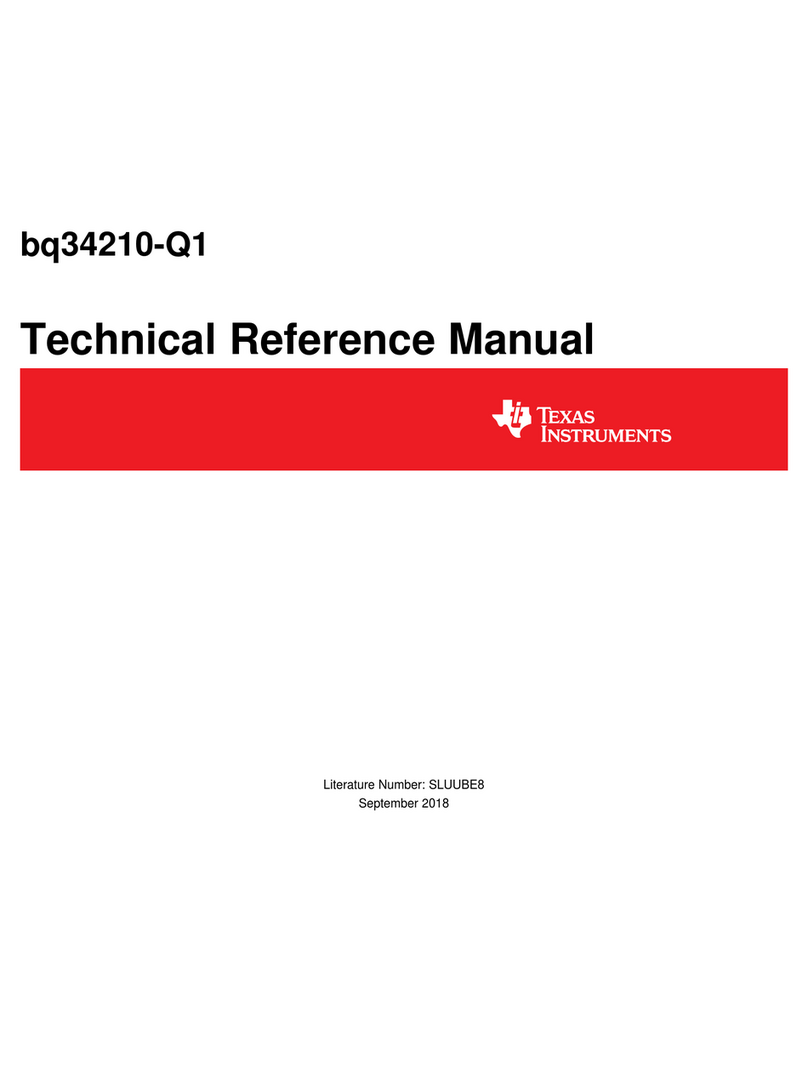
Texas Instruments
Texas Instruments bq34210-Q1 Technical reference manual
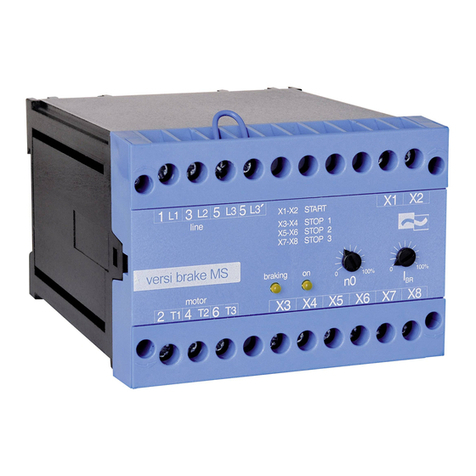
Peter electronic
Peter electronic VBMS Series Assembly and commissioning instructions
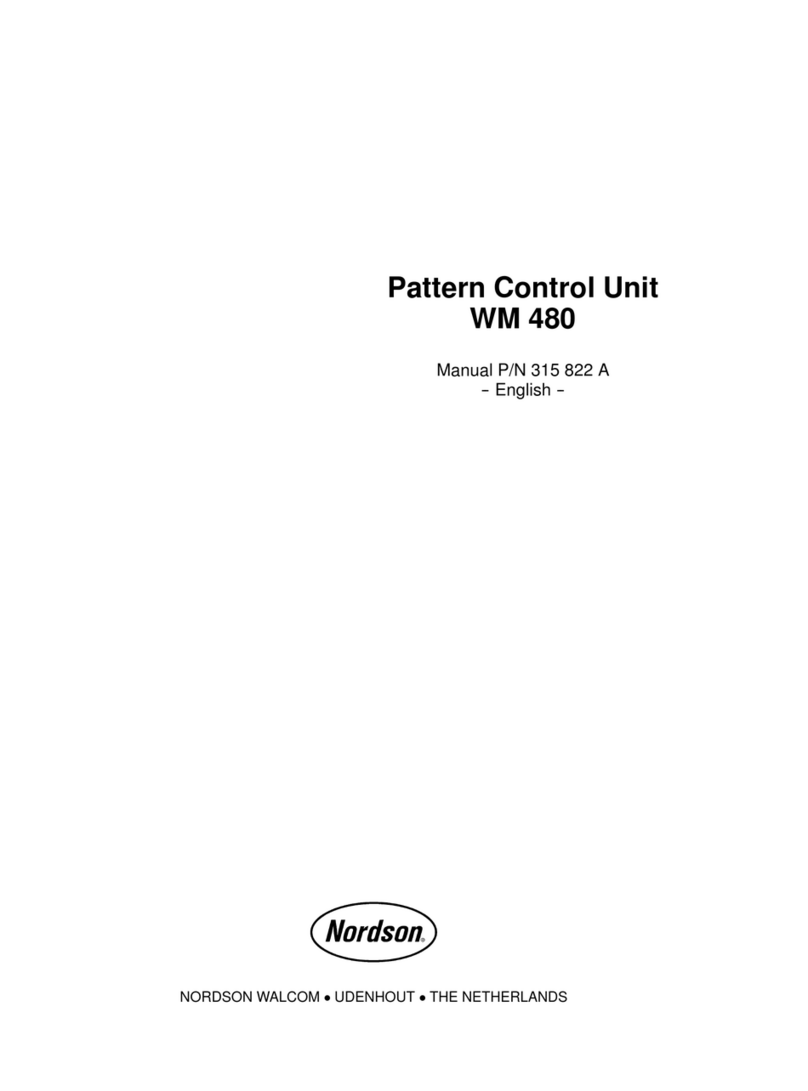
Nordson
Nordson WM 480 manual

Festo
Festo CPX Series Brief description

Watts
Watts FEBCO 850 Small Series manual
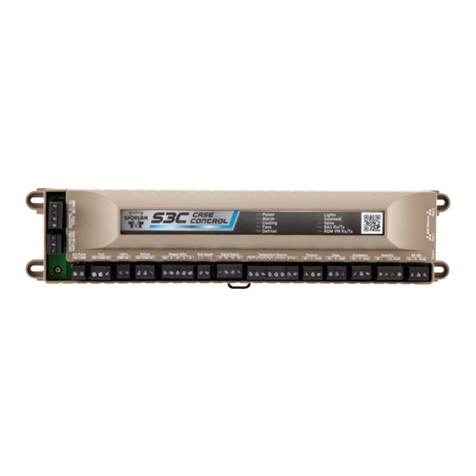
Sporlan
Sporlan Parker S3C Startup guide
